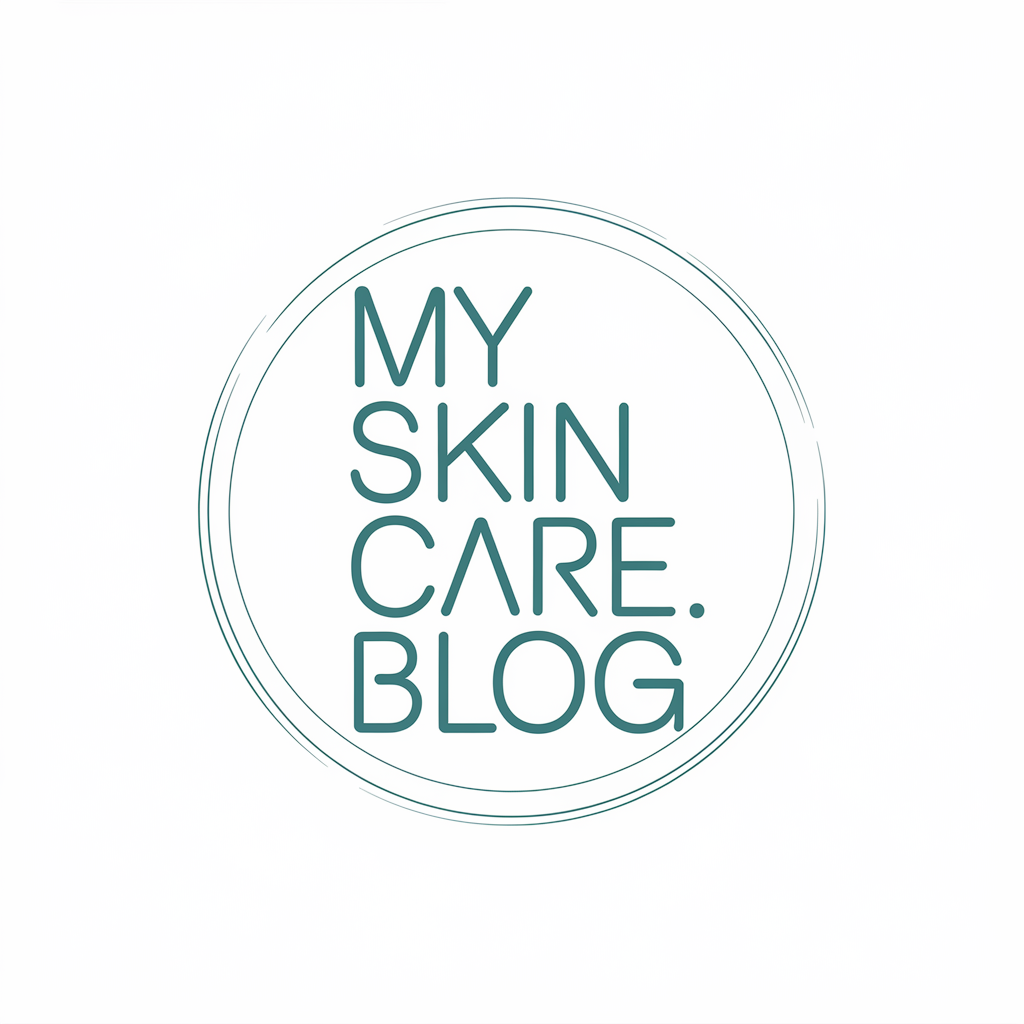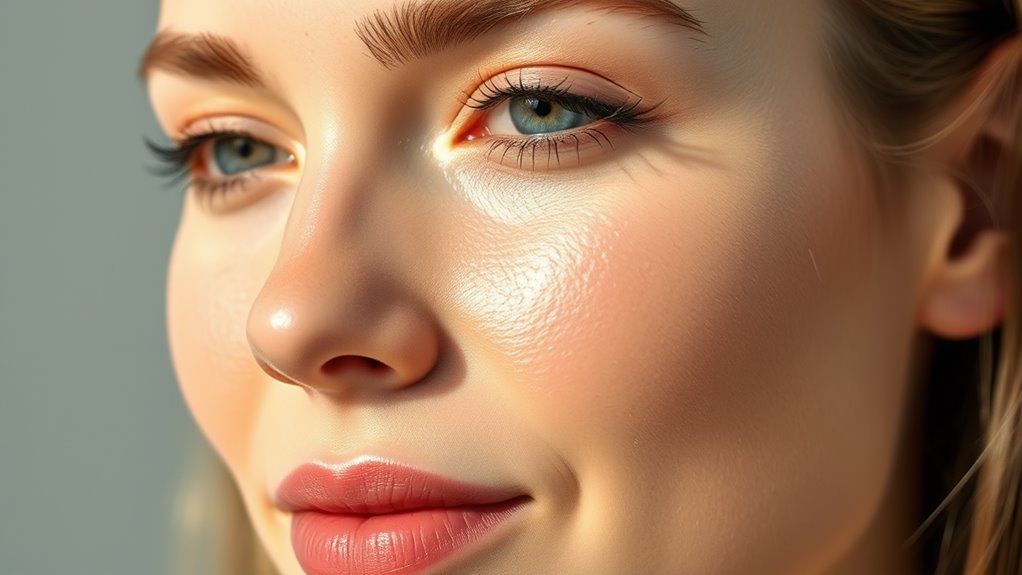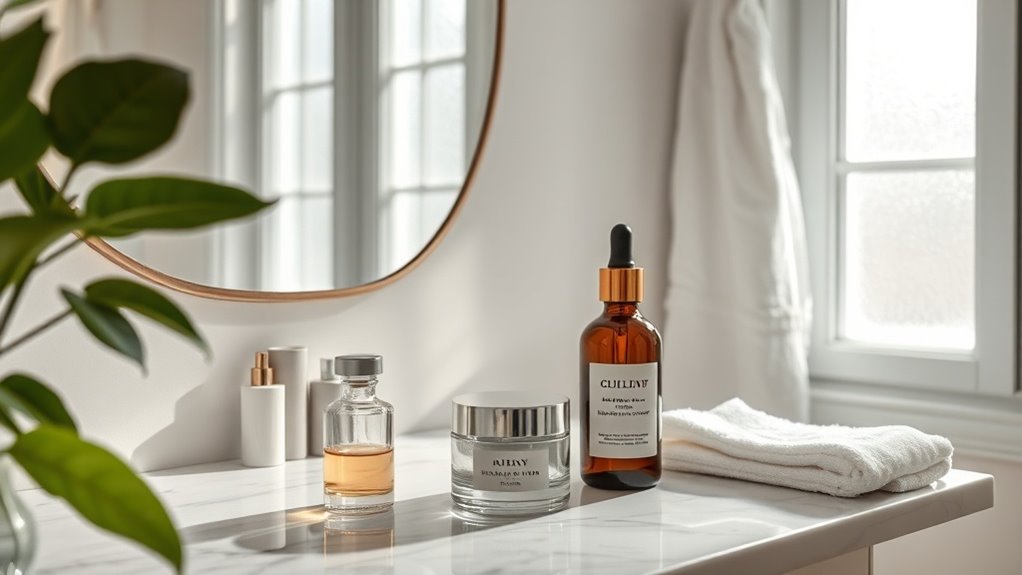Breakouts Won’t Stand a Chance After You Try These Tips
You’ll conquer breakouts by starting with twice-daily cleansing using a gentle, pH-balanced product to zap oil and bacteria. Hydrate your skin with a lightweight moisturizer and plenty of water for a strong barrier. Pick salicylic acid-based items tailored to your skin type, tweak your diet to limit sugary snacks and add nutrient-packed greens, and ease stress through deep breathing or natural remedies like tea tree oil. Keep going for even more game-changing strategies.
Key Takeaways
- Cleanse your face twice daily with a gentle, pH-balanced cleanser to remove oil and prevent breakouts.
- Use salicylic acid products to exfoliate pores and reduce acne lesions effectively.
- Limit added sugars to under 25 grams daily and eat nutrient-rich foods for clearer skin.
- Practice daily meditation to lower stress levels and minimize breakout triggers.
- Consult a dermatologist for tailored advice to maintain a consistent, preventive skincare routine.
Daily Cleansing Routines
Maintaining a twice-daily cleansing routine is key to preventing breakouts and keeping your skin clear. As effective acne hacks, you start by selecting a gentle, pH-balanced cleanser that targets oil and bacteria without over-drying.
In the morning, you remove overnight buildup to minimize pore clogging, while evening washes eliminate daily pollutants. Dermatological studies show this practice reduces acne lesions by up to 50% when done consistently.
Use your fingertips for a thorough, 60-second massage, then rinse with cool water and pat dry gently. You’ll prevent inflammation and maintain a healthy barrier, making these hacks essential for clear skin. To further enhance your routine, always consider the water temperature to avoid stripping your skin of natural oils.
By following these steps, you’ll effectively avoid the mistake of over-cleansing and protect your skin barrier.
Hydration and Moisturizing Tips
Hydration forms the foundation of healthy skin, so you’ll want to lock in moisture after cleansing to prevent breakouts and restore your skin’s barrier.
Choose a routine that includes applying a lightweight moisturizer twice daily, focusing on your face and neck. Studies show that well-hydrated skin reduces inflammation and strengthens its protective layer, minimizing pore clogging.
Gently pat on moisturizer while your skin is still damp to enhance absorption, and avoid over-exfoliating to maintain natural oils.
For optimal results, drink plenty of water and use humidifiers in dry environments to support internal and external balance. Incorporating moisturizing products can help combat dry, flaky skin effectively.
To maximize hydration throughout the day, incorporate layering techniques for better product absorption and lasting moisture.
Selecting the Right Skincare Products
When you’re selecting the right skincare products, start by identifying key ingredients like salicylic acid that effectively target breakouts.
You’ll then match these to your skin type—whether it’s oily, dry, or sensitive—for optimal results.
Finally, test products on a small patch of skin to confirm compatibility and avoid potential irritation. Incorporating prevention strategies into your routine can help minimize acne triggers from daily habits.
Additionally, salicylic acid is effective due to its exfoliating properties, which penetrate pores to remove dead skin cells and reduce acne.
Identify Key Ingredients
Selecting the right ingredients in your skincare products can transform your breakout routine. By choosing evidence-based options, you’ll target acne’s causes like excess oil and bacteria for lasting results.
-
Salicylic acid: This BHA exfoliates pores deeply, removing dead skin and reducing comedones, as confirmed by dermatological studies.
-
Benzoyl peroxide: It kills acne-causing bacteria on contact, minimizing inflammation and breakouts with proven efficacy in clinical trials.
-
Niacinamide: Balances sebum production and strengthens the skin barrier, helping prevent future spots based on research.
-
Tea tree oil: Delivers natural antibacterial and anti-inflammatory effects, soothing acne without harsh side effects, per botanical evidence.
Match Your Skin Type
Once you’ve identified the key ingredients for your breakouts, tailor them to your skin type to maximize effectiveness and minimize irritation.
Start by classifying your skin: for oily types, choose lightweight, oil-free formulas that control sebum and prevent clogging, as studies show they reduce acne incidence.
Dry skin demands hydrating products with ceramides to restore the barrier without exacerbating dryness.
Combination skin requires balanced options that target T-zones while moisturizing elsewhere.
For sensitive skin, select gentle, fragrance-free items with soothing agents like aloe, per dermatological evidence.
This precise matching boosts results and safeguards your skin’s health.
Test for Compatibility
After identifying the right ingredients for your skin, test products for compatibility to avoid irritation and ensure effectiveness. This evidence-based practice, supported by dermatological studies, helps you sidestep common pitfalls like allergic reactions, ensuring your routine delivers real results without setbacks.
To test effectively:
- Perform a patch test: Apply a small amount to your inner arm and wait 48 hours for reactions.
- Monitor closely: Watch for redness, itching, or swelling as indicators of incompatibility.
- Introduce gradually: If clear, use on a small face area before full integration.
- Track outcomes: Keep a simple journal to note changes and adjust products accordingly.
Dietary Adjustments for Clear Skin
You’ll notice clearer skin when you eat whole foods rich in nutrients, as they provide essential vitamins that support your body’s natural defenses.
Through my personal journey, incorporating dietary changes has led to noticeable enhancements in skin clarity over time.
Limiting sugary snacks cuts down on inflammation and breakouts, backed by research showing their link to acne flare-ups.
Start these simple changes today to see practical improvements in your complexion.
Furthermore, avoiding common food triggers like dairy and high-glycemic foods can significantly reduce acne occurrences.
Eat Whole Foods
Incorporating whole foods into your diet boosts skin health by delivering essential nutrients that reduce inflammation and support clear complexion. Evidence from studies shows these foods provide antioxidants and vitamins that repair skin cells and minimize breakouts, making them a practical choice for long-term clarity.
-
Prioritize leafy greens**** like spinach and kale; they’re rich in vitamin A, which regulates oil production and prevents clogged pores.
-
Incorporate nuts and seeds such as almonds for vitamin E, helping to protect skin from oxidative stress.
-
Opt for whole grains like quinoa; their fiber aids digestion, reducing toxins that affect your complexion.
-
Add colorful vegetables**** like broccoli for vitamin C, boosting collagen and accelerating skin healing.
Limit Sugary Snacks
Limiting sugary snacks protects your skin by curbing inflammation and insulin spikes that lead to breakouts. Studies show high-sugar diets exacerbate acne through increased oil production and pore clogging.
You’ll notice clearer skin when you swap candies and sodas for fresh fruits or nuts, as research from the Journal of the American Academy of Dermatology links refined sugars to worsened acne.
Track your intake; aim for under 25 grams of added sugar daily to reduce oiliness and inflammation.
Make it practical: prepare homemade alternatives like apple slices with nut butter, and monitor breakouts to see improvements quickly.
Stress Reduction Techniques
While stress is an inevitable part of life, you can tackle it head-on with proven techniques that draw from research. These evidence-based methods reduce cortisol, a key factor in breakouts, and fit seamlessly into your routine for better skin health. To enhance these benefits, consider incorporating overnight treatments for quicker relief from stress-related skin concerns.
-
Practice deep breathing: It quickly activates your parasympathetic nervous system, lowering stress in minutes, as shown in stress reduction studies.
-
Exercise regularly: Physical activity boosts endorphins and cuts anxiety, with research linking it to improved mood and skin clarity.
-
Meditate daily: Mindfulness techniques decrease cortisol levels, backed by clinical trials that demonstrate their effectiveness on mental well-being.
-
Journal your thoughts: Writing processes emotions and reduces overwhelm, helping you maintain balance as supported by psychological research.
Additionally, combining these techniques with hormonal changes management can further prevent acne triggered by stress, promoting long-term skin health.
Natural Remedies and Spot Treatments
Beyond conventional treatments, you can harness natural remedies and spot treatments to tackle breakouts effectively, drawing on research that highlights their anti-inflammatory and antibacterial properties for clearer skin. Additionally, these natural approaches can also aid in fading acne scars for improved skin texture.
For instance, tea tree oil, backed by clinical studies, reduces acne when applied directly—dilute it first to prevent irritation.
Aloe vera soothes inflammation; use it as a spot gel nightly.
Honey’s proven antimicrobial action makes it ideal for masks—apply for 10-15 minutes.
Always consult a dermatologist and patch test to ensure safety, maximizing these options for practical, evidence-based results.
To achieve lasting results, incorporate prevention tips such as maintaining a consistent skincare routine.





